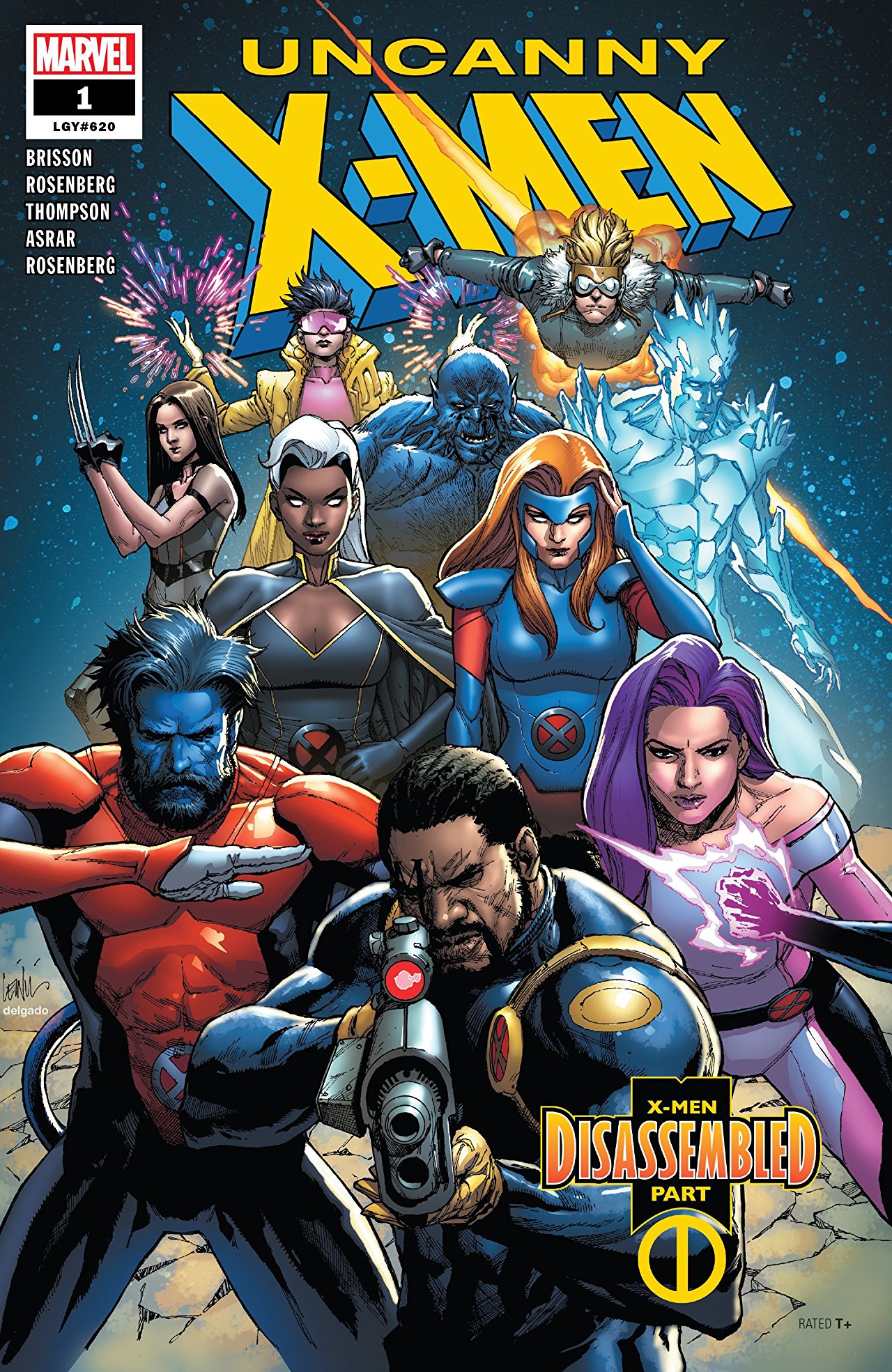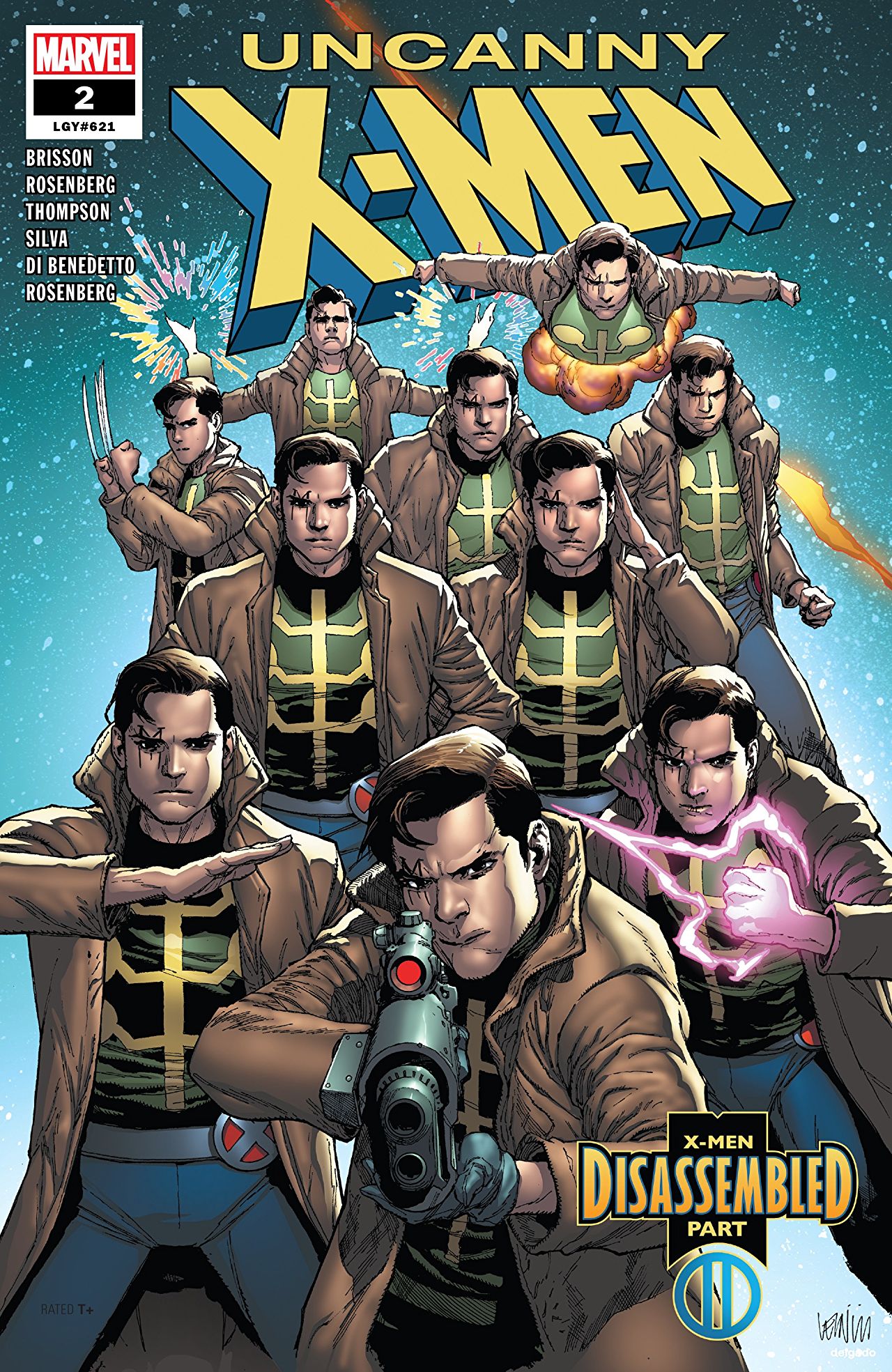Uncanny X-Men #1 // Review
It’s the return of the flagship in Uncanny X-Men #1, by writers Kelly Thompson, Ed Brisson, and Matthew Rosenberg, artists Mahmud Asrar, Mirko Colak, Ibraim Roberson, Mark Bagley, inker Andrew Hennessy, colorists Rachel Rosenberg and Guru-eFX, and letterer Joe Caramagna. It’s been a few years since Marvel has published an Uncanny X-Men book, and reader anticipation is at an all-time high for its return, especially with Marvel finally getting the full rights back for the merry mutants. Can the book stack up to that rabid anticipation?
Jean has a strange vision of an army of Multiple Men looking for Kitty Pryde and attacking the X-Men. Meanwhile, Kitty is leading a team of the junior X-Men on a mission to rescue a bunch of scientists from Forearm, an evil mutant with super strength and four arms, but she disappears and the young X-Men get more than they bargained for as Forearm is joined by his old comrades, the Mutant Liberation Front. A battle ensues, as the MLF reveal that the scientists were working on a cure for the mutant gene. Reinforcements arrive, and the X-Men deal with their wounded. Back in New York, a debate between an anti-mutant Senator and Jean Grey, who took Kitty’s place after her disappearance, is interrupted by an army of Multiple Men trying to stop a mysterious event…and failing. In the back-up story, Bishop, Storm, Jean Grey, Anole, and Armor are caught up in a conundrum, as refugees from the Age of Apocalypse reality are disappearing and a bunch of normal people get powers.
This book is a return to form for the X-Men and that’s a good and bad thing. The good part is that it’s well written, action-packed, and intriguing. The characters feel like themselves and the mystery of what the Multiple Men are trying to prevent and who is behind the disappearances is definitely enough to keep readers coming back. The last page of the story ups the stakes dramatically, as readers get a glimpse of a powerful X-villain being held prisoner by this mystery antagonist. However, the whole mutant cure angle and anti-mutant Senator are all things longtime fans of the X-Men have seen before, and it feels a little like going to back to the well to include them here. Lately, whenever Marvel brings back one of its premier mutant concepts, it feels like it always turns the clock back and rehashes some things. This may be for the mythical new reader demographic that never shows up as much as publishers in general and Marvel in particular want, but, for people who have been with the X-Men for any significant amount of time, a lot of this is old hat. It doesn’t really take away much from the story; there’s a lot to love about this book and it’s definitely worth coming back for.
The back-up story is another interesting mystery with very little payoff at all. Unfortunately, anyone who pays attention to advertising and Marvel solicitations can make the connection between Age of Apocalypse refugees disappearing and the advertised return of a certain character from that reality in the pages of this book after the initial story arc ends. Taken on its own merits, this is a tight little mystery story that sets up an upcoming story arc perfectly. It’s almost better than the main story, really. While both of these stories feel like X-Men stories, the first one has a little too much rehashing of old concepts to make its plot work. The second one takes a well-loved page from the X-mythos and brings it back, teasing what’s to come. It feels more fresh and new than the main story.
In the main story, Mahmud Asrar busts out a bunch of really nice full page action spreads to begin the book, and keeps that level of quality up throughout. His linework is crisp and detailed, his character acting is top notch, and his action scenes are kinetic and easy to follow. The quality of the art varies wildly in the back-up story, as there are three separate artists working on it. Mirko Colak’s pages are the weakest. Body proportions are warped, the linework is ugly, and it feels flat and lifeless. Ibraim Roberson’s pages are probably the strongest, with smooth, expressive linework and one of the most beautiful Jean Grey’s anyone drawn in years. Mark Bagley’s pages are strange, in that they look like someone trying to ape Bagley’s style instead of being drawn by Mark Bagley at first, but as the pages progress, they get that trademark Bagley feel and flow.
Uncanny X-Men #1 is a good return for the most important mutant book of them all. The two stories it contains are very good X-Men stories, but the first one is weakened by concepts that readers have seen multiple times, and the second suffers a little from uneven art and the ending being spoiled by Marvel’s publicity machine. Readers expecting something akin to Grant Morrison’s revolutionary and transformative New X-Men aren’t going to get their wish. This book is more like Joss Whedon’s return to form Astonishing X-Men run than anything else: indebted to what came before, but extremely entertaining. It’s a must-buy for X-Men fans, and also gives new readers with only a cursory knowledge of the X-Men a good place to start.









